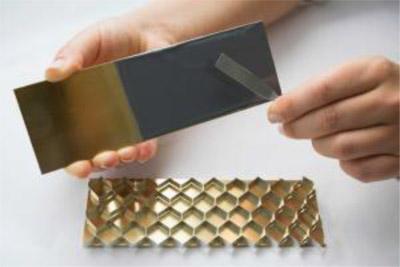
Combining simple handling properties with high strength, Master Bond Supreme 10HTF-1 is a single part adhesive/sealant for a variety of applications in the aerospace, electronic, optical, specialty OEM and related industries. At room temperature, this smooth paste system has an "unlimited" working life and cures rapidly at elevated temperatures. For example, typical cure schedules for Supreme 10HTF-1 are 5-10 minutes at 300°F or 15-20 minutes at 250°F.
Supreme 10HTF-1 delivers impressive physical strength values for tensile lap shear, tensile and T-peel of >3,200 psi, 6,500-7,500 psi and 20-25 pli, respectively. This system bonds well to a wide variety of substrates including metals, composites, glass, ceramics, rubbers and many plastics. It has very low shrinkage upon curing, is dimensionally stable and has a Shore D hardness >70. As a toughened system, Supreme 10 HTF-1 is capable of withstanding rigorous thermal cycling as well as mechanical shock and vibration.
Supreme 10HTF-1 offers cryogenic serviceability over the wide temperature range of 4K to +400°F. The adhesive resists an array of chemicals such as water, fuels, acids, bases and many solvents. Also, it is a reliable electrical insulator. Volume resistivity is 1013 ohm-cm.
This compound is gray, but other colors are available. Supreme 10HTF-1 is available in standard packaging ranging from ½ pint to 5 gallon containers as well as specialty packaging including cartridges and syringes.
Contact Details
Related Glossary Terms
- ceramics
ceramics
Cutting tool materials based on aluminum oxide and silicon nitride. Ceramic tools can withstand higher cutting speeds than cemented carbide tools when machining hardened steels, cast irons and high-temperature alloys.
- composites
composites
Materials composed of different elements, with one element normally embedded in another, held together by a compatible binder.
- hardness
hardness
Hardness is a measure of the resistance of a material to surface indentation or abrasion. There is no absolute scale for hardness. In order to express hardness quantitatively, each type of test has its own scale, which defines hardness. Indentation hardness obtained through static methods is measured by Brinell, Rockwell, Vickers and Knoop tests. Hardness without indentation is measured by a dynamic method, known as the Scleroscope test.







